Owing to the good optical quality of the VST, and to the quality control procedures which are applied by both ESO and the survey team, the quality of VPHAS+ data tends to be excellent. Like any other data set however, VPHAS+ is affected by a number of caveats. This page summarises a range of issues presently known.
All the VST/OmegaCAM exposures are known to contain a significant component of stray light, which is dominated by a centrally concentrated radial pattern which causes the flat-field frames to be "overexposed" in the center of the FOV. As a result, the flat-fielded science images contain an artificial zeropoint gradient of up to ~10%, which needs to be corrected for in order to achieve a good photometric calibration. A discussion on the issue is offered in Sect 2.9 of the OmegaCAM manual, and in a dedicated OmegaCAM commissioning report. Details on how the VPHAS+ survey mitigates the issue is found in Sect 2.3.3 of the VPHAS+ introductory paper, and on the CASU webpage on the topic.
Apart from the radially concentrated stray light which is present in all the images, the data is also affected by reflections on small spatial scales. For example, bright stars trigger several ghost images which are reasonably well-focused. An example is shown below. A characterisation of the ghosts is given in Sect 3.7.3 of the OmegaCAM manual.
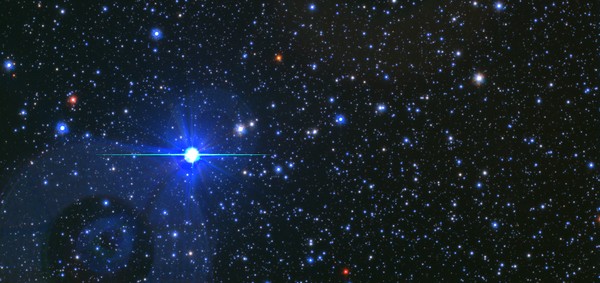
Figure: colour-mosaic of CCD #1 in VPHAS field 1952b.
A bright star is seen to trigger several ghost images and diffraction spikes.
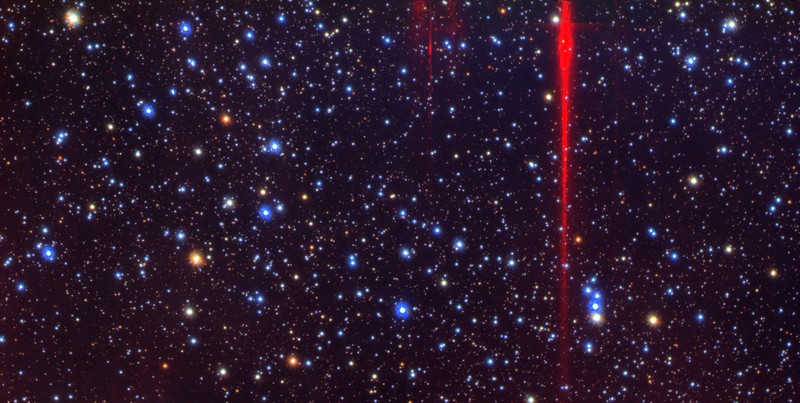
Figure: colour-mosaic of CCD #28 in VPHAS field 1737a.
Stripes can be seen which are thought to be caused by a bright star outside the field.
VPHAS+ frames are occasionally found to show wispy lines, bright streaks, and background gradients which are not well understood at present. The working hypothesis is that these features are the result of stray light from an unknown origin, possibly a bright star outside of the field of view.
In particular, we warn users that some of the wispy lines may be mistaken for the pattern produced by a supernova remnant. Fields which are known to include wispy lines are 0004, 0005, 0032, 0034, 0035, 0082, 0636, 0687, 0688, 0712, 0713, 0714, 0774, 0775, 0798, 0799, 0800, 0825, 0826, 0853, 0878, 0903, 1501, 1669, 1817b, 1818, 1850, and 1959.
A bright and a faint example are shown below.
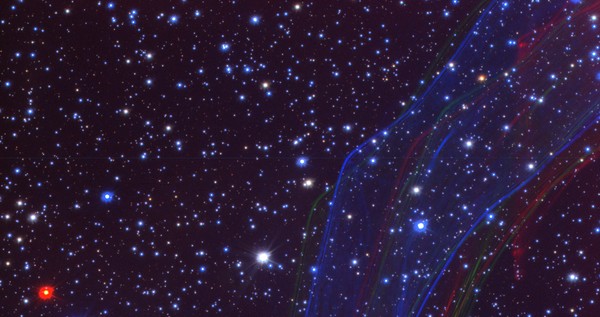
Figure: colour-mosaic of CCD #8 in VPHAS field 0713a.
Several "wispy lines" are seen in the right half of the image.
Their origin is not understood at present.
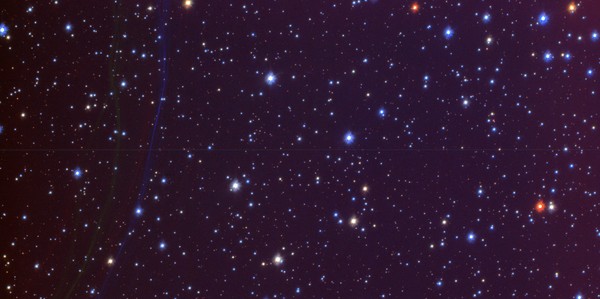
Figure: colour-mosaic of CCD #8 in VPHAS field 0853a.
A faint pattern of wispy lines is seen in the left half of the image.
Stray light is also seen in extended shapes and gradients. The example below shows a streak of light scattered into the image from an unknown source.
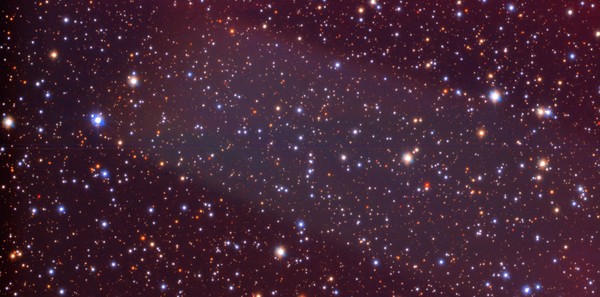
Figure: colour-mosaic of CCD #8 in VPHAS field 1818a.
A streak of stray light is apparent.
The pointing of the VST has been found to show a systematic errors of up to 30 arcsec, in an absolute sense, between different nights. The one-sigma residual between the requested and the observed position equals 7 arcsec (as measured from the VPHAS data taken in 2012 and 2013). The red (Ha, r, i) and blue (u, g, r) concatenations are nearly always observed on separate nights, and hence the CCD frames of the six bands do not usually show a perfect overlap in the sky as a result of the pointing errors.
An example is field 1921, which was observed in the night of 2013-01-30 (red bands) and 2013-04-02 (blue bands). The data from these two different nights show a systematic shift in the pointing of 30 arcsec in RA and 15 arcsec in Dec. As a result, the area in the sky where all 6 bands overlap was reduced by 18% compared to the ideal case. Most fields show less extreme shifts however.
The pointing errors are largely mitigated by the fact that each VPHAS field is paired with an offset pointing at a distance of -588 arcsec in RA and +660 arcsec in Dec, which is a strategy designed to cover the inter-CCD gaps. The pointing errors will increase the size of the holes which are created where inter-CCD gaps in the offset pair overlap, but these gaps only comprise about 3% of the footprint.
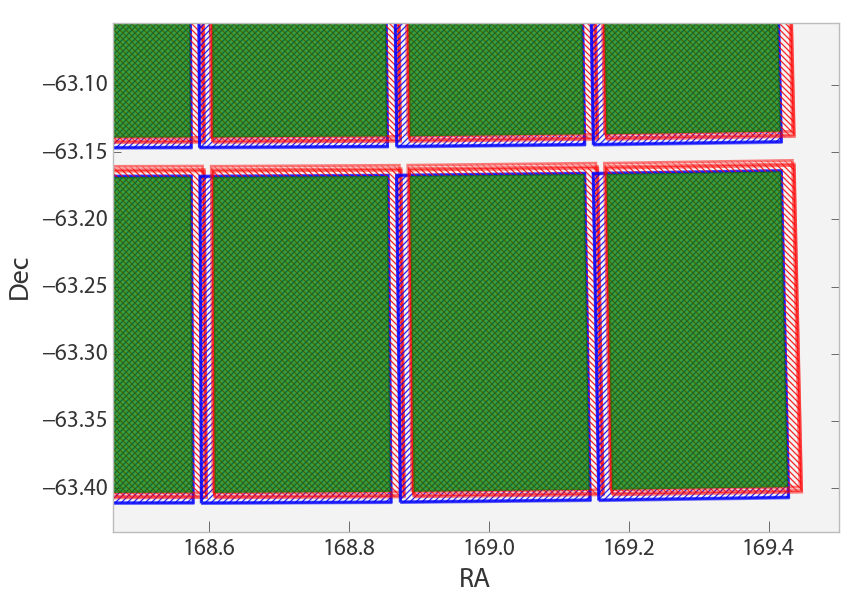
Figure: footprint of the corner of VPHAS pointing 1921a.
The spatial coverage of the red bands is shown using red lines;
blue bands are shown using blue lines. The area of overlap is indicated in green. A mis-match between the blue and red pointings is apparent.
Users need to be aware of two filter issues:
Last updated: February 2015.